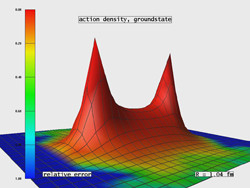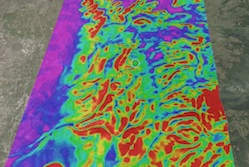Simulating quarks and gluons
Strong interactions play a key role in the formation of matter, with a rich phenomenology. The validity of QCD as the fundamental theory of strong interactions is well tested at very short distances by high energy experiments, but analytic solutions are hard or impossible to obtain at distances similar to the size of the proton. To obtain predictions in this regime, QCD is discretized on a four-dimensional spacetime lattice and numerically simulated (lattice QCD). These simulations require enormous computing power. The 'Strong interaction supercomputing training network' (STRONGNET)(opens in new window) advanced simulation algorithms, developed supercomputing hardware components and undertook major numerical simulations. Ten universities from seven EU Member States joined their efforts to meet these challenges. They developed dedicated software tools and computer hardware. Together with the network's industrial partners for instance the QCD Parallel computing on the Cell broadband Engine (QPACE) supercomputer was developed that delivered a higher performance/power ratio (Green Computing) than industrial installations. New Monte Carlo integrators and efficient Multigrid linear solvers were developed and a multitude of observables relevant to particle physics computed. STRONGNET partners shared their expertise with a large number of early-stage researchers who were trained in the numerical methods needed in quantum field theory and particle physics. Some of these new generation physicists will continue to solve QCD problems, helping to maximize the impact of particle physics experiments and thereby advancing our understanding of Nature. Others now work in industry where similar skills are required.






